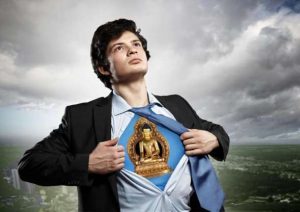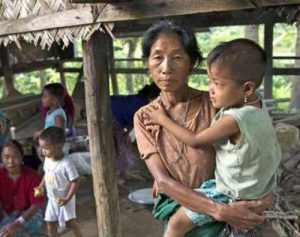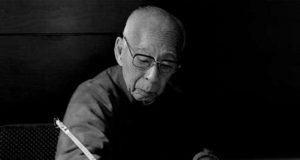Kathmandu is throwing open the doors of Nepal’s art to the world with the country’s first modern art biennale, which features over 100 works from 80 living artists of traditional and contemporary styles. Titled: Kathmandu Art Biennale: Spiritual Edition, the biennale is being held at the Museum of Nepali Art (MoNA) in the heart of the Nepalese capital. It officially launched on 18 January with a reception for international delegates from the art, academic, and Buddhist worlds and ambassadorial guests in Kathmandu. The deputy mayor of Kathmandu, Ms. Sunita Dangol, also came for a tour of the event and the exhibited artworks and installations. It will run until 18 April 2024.
MoNA is located on the picturesque grounds of Kathmandu Guest House (KGH), one of the largest and most well-known hotels in the heart of Thamel, Kathmandu’s famous nightlife, restaurant, commercial, and coffee culture zone.
This is the first privately sponsored artistic event in the Himalayan nation, and unlike government-funded museums and galleries, aims to bring contemporary and traditional art together in a dialogue about Nepal’s artists. The biennale is being hosted in two separate wings in KGH: at MoNA itself, a spacious basement museum that Sakya converted from a carpark, and Kathmandu Art House, where select artists have installations in individual rooms curated by the MoNA team.
MoNA is trailblazing a new path of art appreciation in Kathmandu, leveraging the considerable talents and creativity of local artists with a professional team of curators and coordinators to educate not just the global community, but also the Nepalese public, about the country’s artistic heritage and richness. Artists include some of the foremost creative minds in the country, including Kiran Manadhar, considered the father of contemporary Nepalese art with studios in France and Germany, Samundra Man Singh Shrestha, a prominent representative of the “new traditional” school, and many, many more.
The founding director of MoNA and owner of the KGH hotel group, Mr. Rajan Sakya, hopes that visitors will appreciate how underexposed Nepali artists are compared to their international counterparts. “My love for art comes from my love for artists, because they are the creators of things good and beautiful in our world,” he told assembled delegates on the 18th, along with the artists he had invited to contribute to the biennale. He also said that spirituality was a fitting theme for the inaugural biennale since art itself is a spiritual undertaking, and Kathmandu and Nepal have always been associated with spiritual matters in the popular imagination. He noted: “When you dedicate your life to something beyond yourself for the betterment of community and humanity: that is spirituality for me.”
The curation was spearheaded by Ursula Manandhar, head of research at MoNA, and a small team of curators. She told BDG: “Within the sacred realms of the divine, our daily lives often obscure the sense of divinity. The Kathmandu Art Biennale serves as a gateway, inviting us to rediscover our spiritual essence through the transformative language of art.”
MoNA director Shaguni Singh Sakya, a specialist in Nepali art, told Buddhistdoor Global in an interview that even contemporary Nepalese art draws on vast spiritual resources, from Hindu iconography and folkloric elements to beloved Buddhist figures like Tara, Dipankara, and Manjushri. She hopes that the biennale, as the first of its kind, can serve as a foundational stepping stone to more sophisticated discussions about Nepali art history, critical analysis, and how the country and society has influenced art production.
Rasna Shrestha, sales and marketing executive for MoNA and manager of Kathmandu Art House, told BDG: “The Kathmandu Art Biennale marks a significant milestone as Nepal’s inaugural private-sector-driven art event. With a dedicated team, this spiritually themed Biennale offers diverse perspectives on spirituality through various artistic genres and meticulous curation. It has been an honor to serve as a co-curator, contributing to the historic tapestry of Nepal’s art scene. Personally, since I am myself a passionate painter, this opportunity has allowed me to broaden my artistic horizons by curating meaningful paintings for this momentous occasion.”
At the heart of the biennale is a question that Sakya and his team hopes to pose for every person: what does spirituality mean for someone personally, be they an enjoyer of art, the local Nepali citizen, or a foreign visitor to Kathmandu? This is an intensely private question, but one that the MoNA team hopes that the acclaimed artists of Nepal can help craft part of the answer for the individual seeker.
Related news from BDG
Italian Architect Unveils Ambitious Plan for New Buddhist Meditation Center in Nepal
Nepal Inaugurates Newly Restored Fifth-Century Buddhist Monument near Kathmandu
Related features from BDG
Journey to the Buddha’s Homeland: Rediscovering Pilgrimage Sites in Nepal
Related blog posts from BDG
Art Renaissance in Nepal: Ursula Manandhar and the Bridge Between Paubha and Neo-Traditional





















